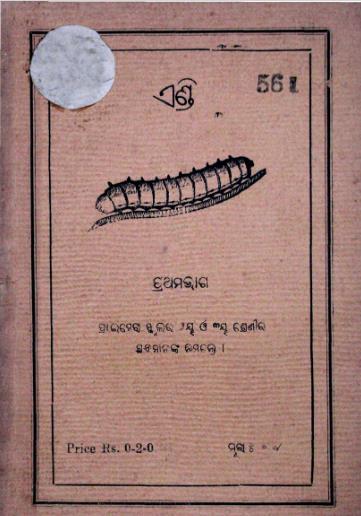In the evolution of Odia educational literature, the publication of Endi in 1929 stands as a significant milestone, crafted by the visionary educator Bhikari Charana Patnaik. This textbook not only presents a structured approach to learning but also reflects the sociocultural milieu of early 20th-century Odisha. Endi serves as an essential resource for students, particularly in understanding the intricacies of the Odia language as well as the broader themes of local geography, history, and culture.
The term Endi translates to knowledge or wisdom in Odia, aptly embodying the essence of Patnaik’s work. As an educational resource, the textbook was designed to enhance linguistic skills, offering students a comprehensive foundation in the Odia language. Patnaik’s meticulous attention to language structure, grammar, and vocabulary fosters both comprehension and application, making Endi a crucial tool for students in their academic journey.
One of the standout features of Endi is its systematic approach to teaching. Patnaik incorporates a variety of exercises and activities that promote active learning. These include reading comprehension passages, vocabulary drills, and grammar exercises, all structured to reinforce language acquisition. This hands-on methodology aligns with the progressive educational principles of the time, advocating for a learning environment that is interactive and engaging rather than merely rote-based.
In addition to its focus on language, Endi also emphasizes the importance of cultural and historical context in education. Patnaik integrates elements of Odia folklore, local history, and traditions throughout the textbook, enriching the curriculum with cultural relevance. This approach not only cultivates language skills but also fosters a sense of pride in Odia heritage. By connecting students with their roots, Endi plays a vital role in nurturing cultural identity and awareness.
Patnaik’s Endi also reflects the broader educational reforms occurring in India during the early 20th century. As India faced the challenges of colonial rule, there was a growing emphasis on vernacular education. Endi emerges as a response to this movement, promoting the use of Odia in educational settings. This advocacy for regional languages not only empowers students but also ensures the preservation and promotion of Odia cultural identity amid colonial influences.
The clarity of language and thoughtful organization of content in Endi ensure that it remains accessible to students across varying skill levels. Patnaik’s style is engaging and relatable, which encourages students to relish their learning experiences. This accessibility contributes to the textbook’s longevity in Odia educational institutions and its continued relevance in modern pedagogy.
Moreover, Endi is notable for its role in bridging gaps between different generations of learners. The timeless themes and educational philosophies embedded within the textbook resonate with both contemporary and historical contexts. As new generations of students engage with the material, Endi continues to foster a love for language and learning, inspiring curiosity and critical thinking.
Books Info
| Books name | Endi / ଏଣ୍ଡି |
| Author | Bhikari Charana Patnaik |
| No Of pages | 176 |
| Publisher | NA |
| Publication | 1929 |
| Printed At | The Cuttack Printing Company |
| Distributor | NA |

